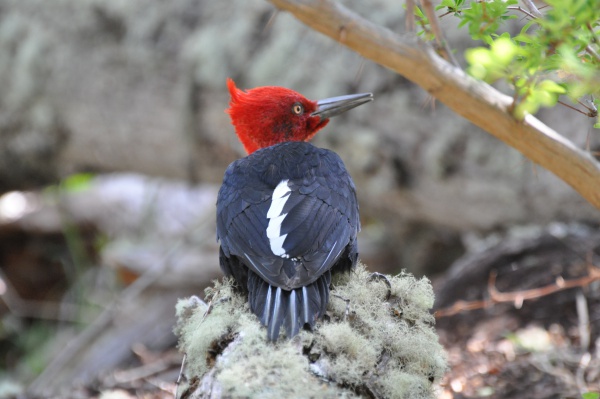Facts About Magellanic woodpecker
The Magellanic woodpecker is a striking and sizable bird native to southern Chile and southwestern Argentina. As the southernmost member of the Campephilus genus, it is renowned for its impressive size. Males typically weigh between 312 to 363 grams, while females are slightly lighter, ranging from 276 to 312 grams. These woodpeckers are predominantly black, featuring a distinctive white wing patch and a sturdy, chisel-like grey beak. One of the most eye-catching differences between males and females is that males sport a vibrant crimson head and crest.
These birds inhabit mature Nothofagus forests, where they feed on a varied diet that includes wood-boring grubs, beetles, spiders, sap, fruits, and occasionally small reptiles and birds.
The Magellanic woodpecker is quite vocal, producing a range of sounds from explosive calls to loud gargling noises. Breeding pairs are highly territorial and can be aggressive towards other woodpeckers of the same species, sometimes even attacking them. They breed in the spring, with both parents actively involved in excavating the nest and sharing responsibilities in raising their young.
Unfortunately, these woodpeckers face significant threats due to forest loss and fragmentation, leading to a decline in their population. Predators, mainly avian raptors, pose another threat, although the woodpeckers become particularly defensive and confrontational during the nesting season.
While the Magellanic woodpecker is currently listed as a species of least concern, its declining population due to habitat loss is alarming. Conservation efforts are crucial to protect these magnificent birds and ensure their survival for future generations.

 Bolivia
Bolivia